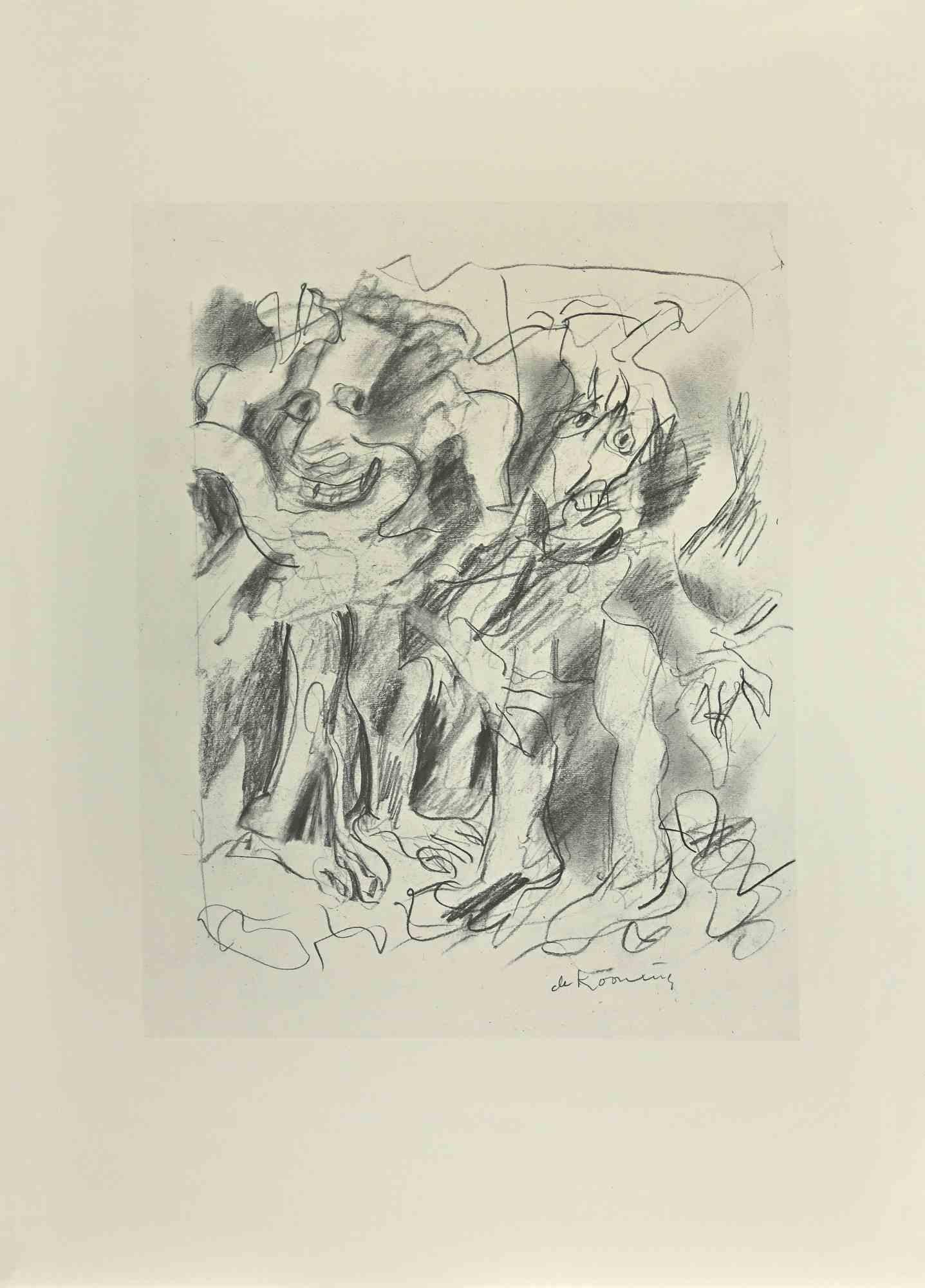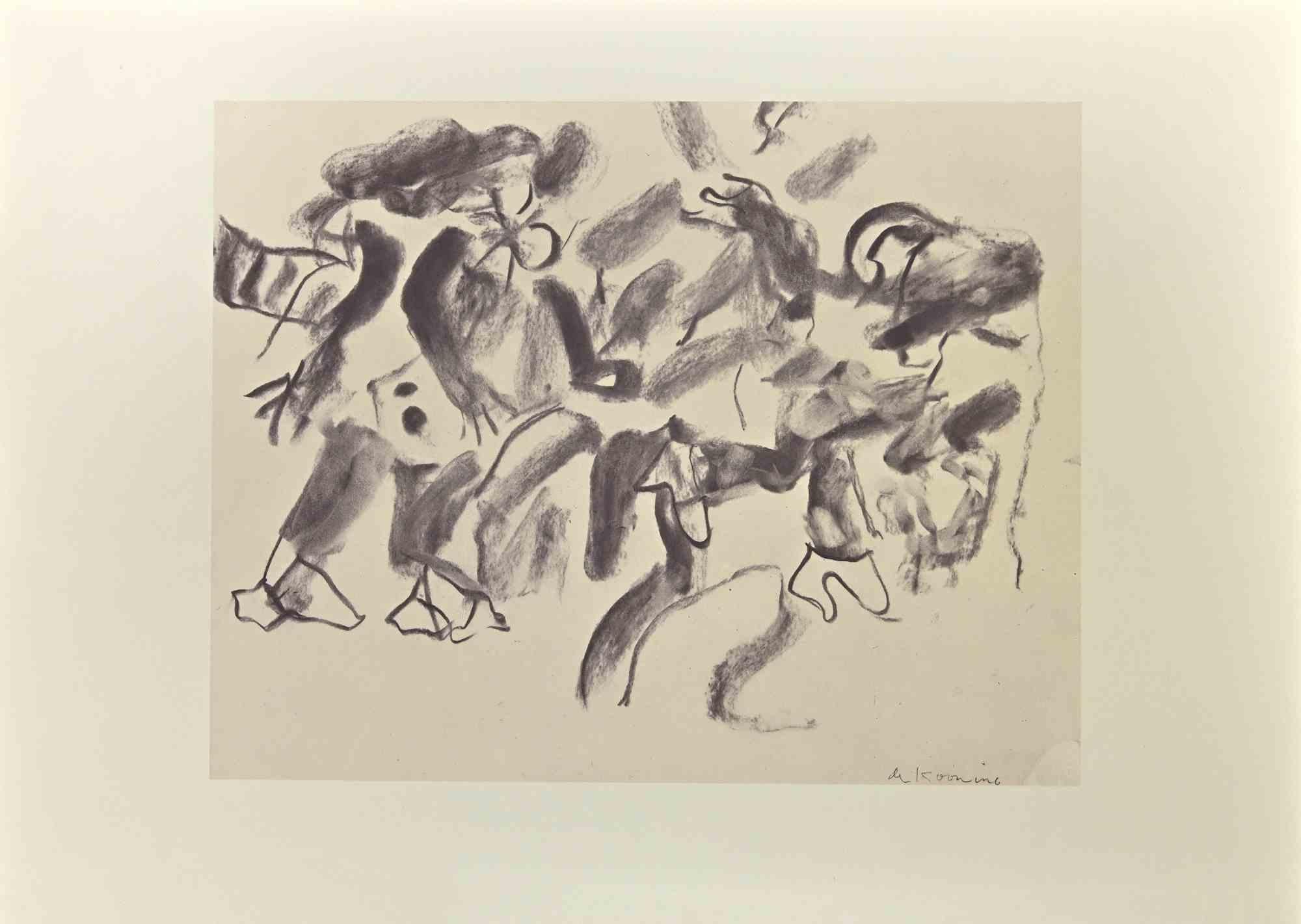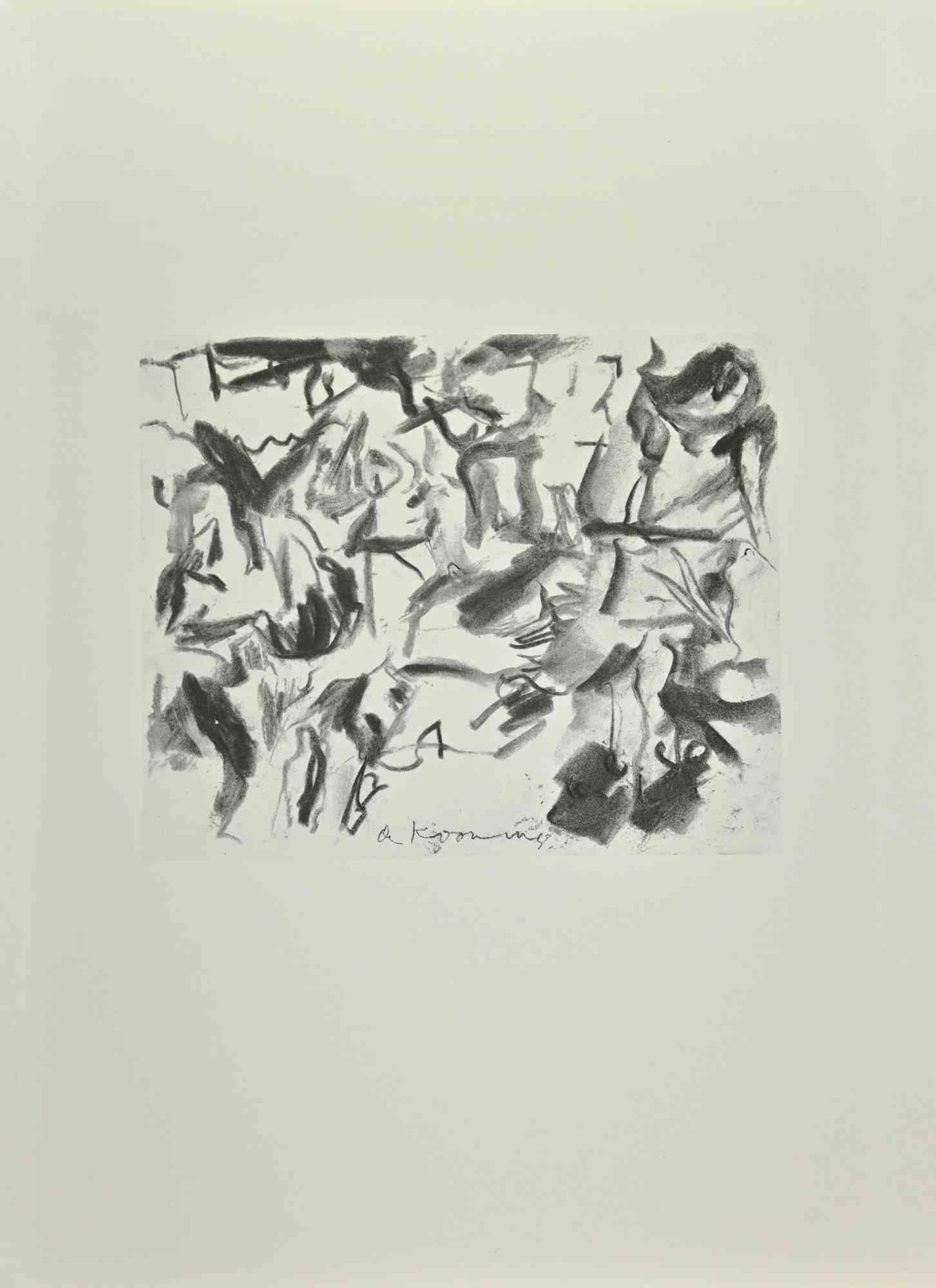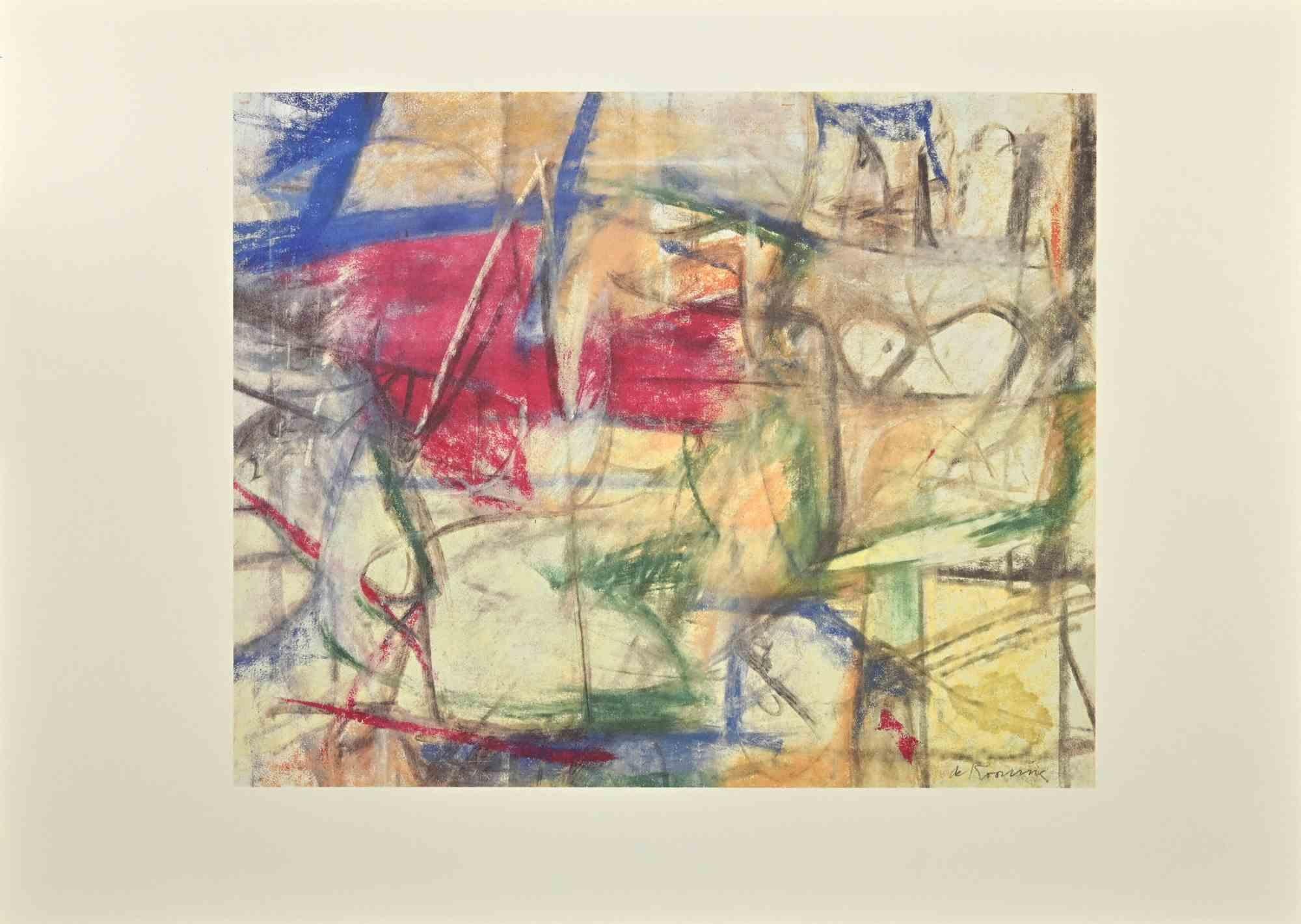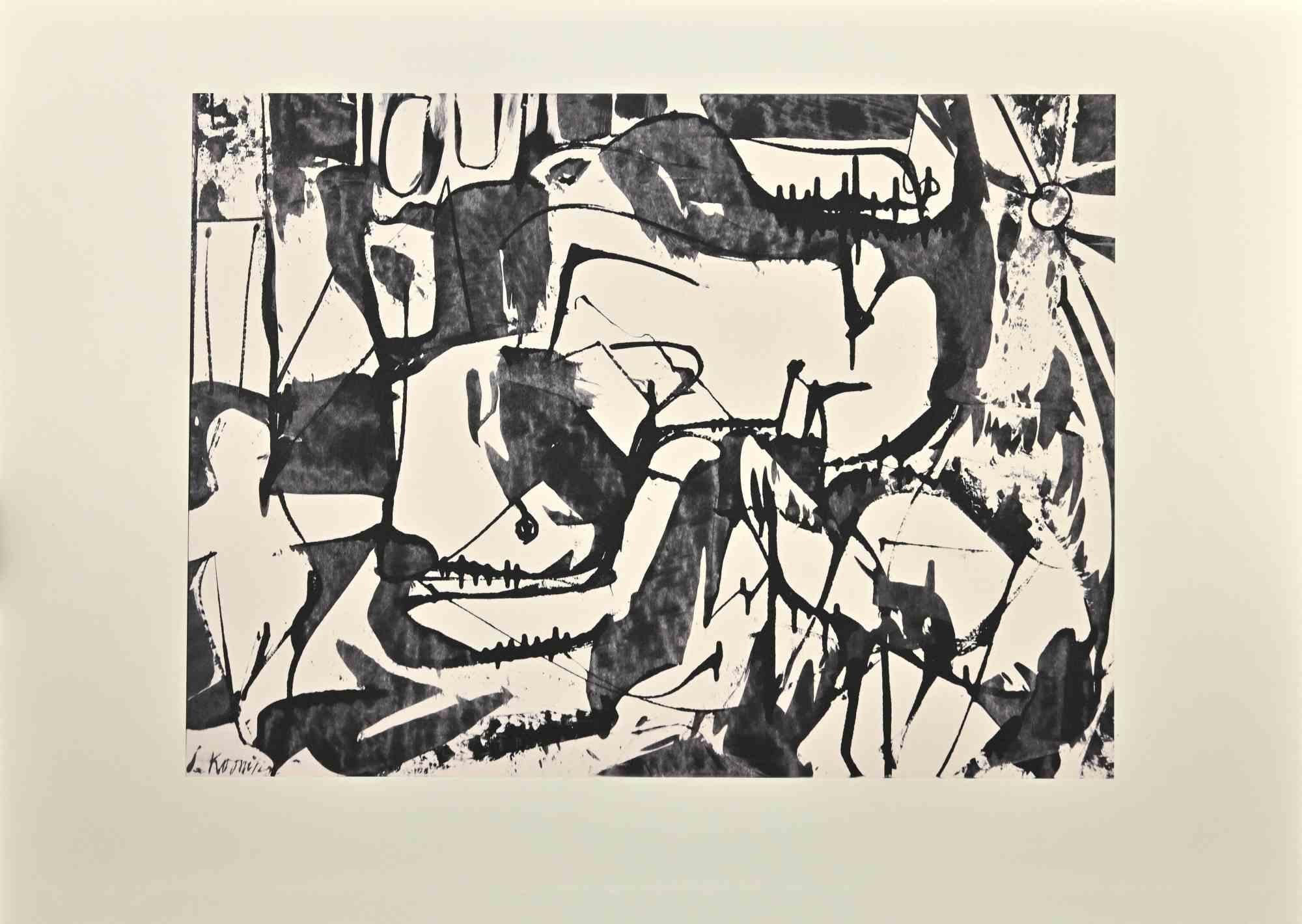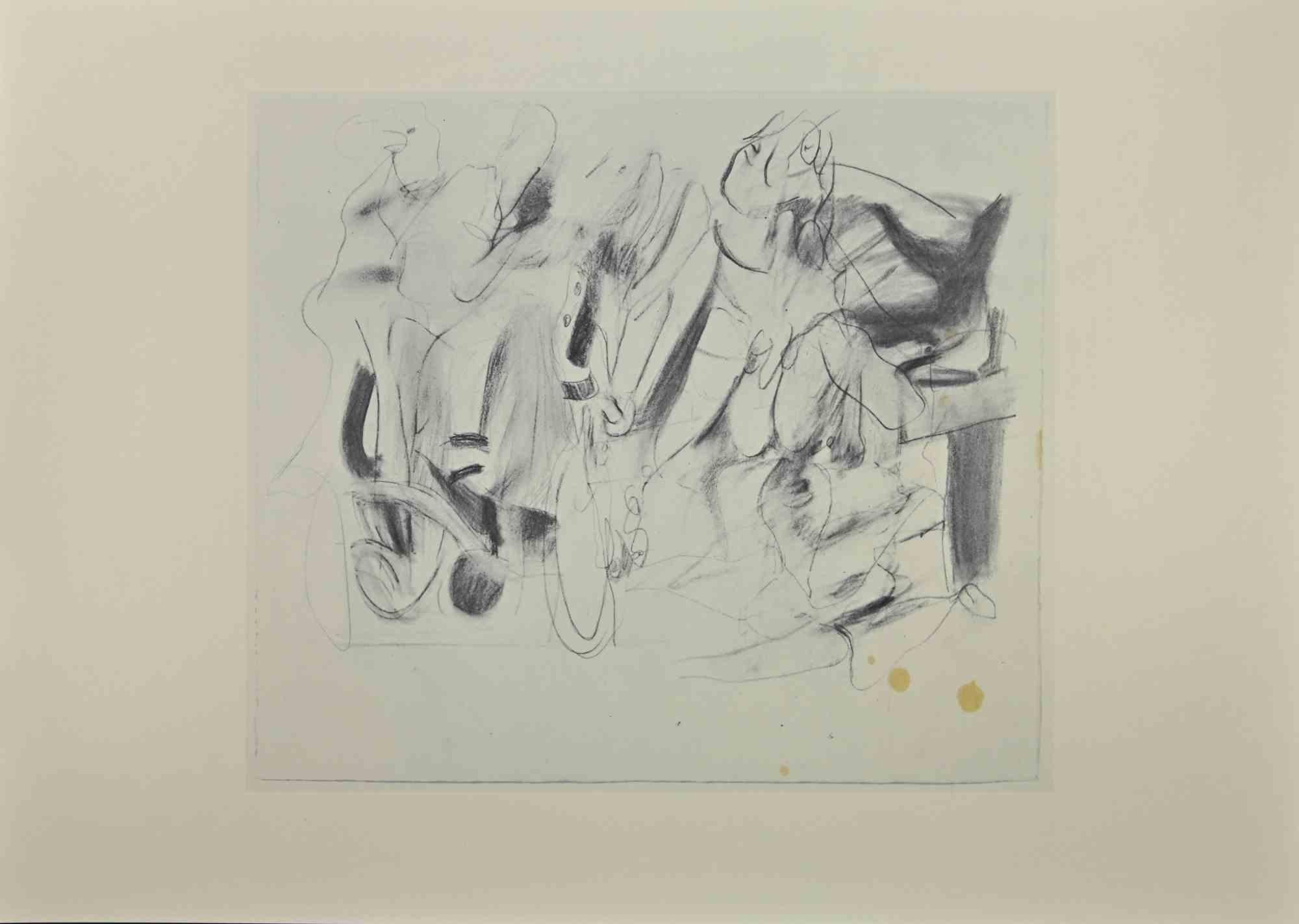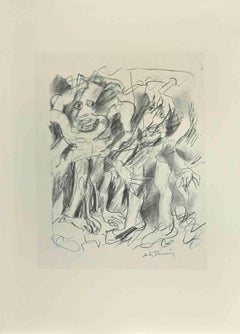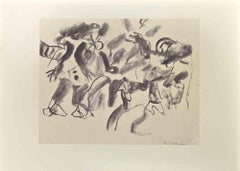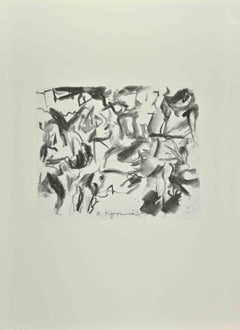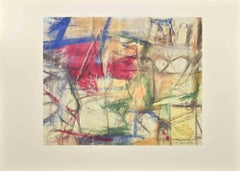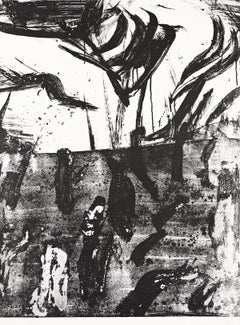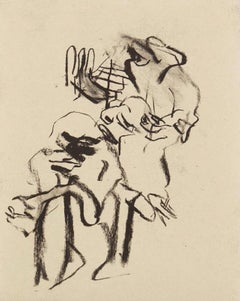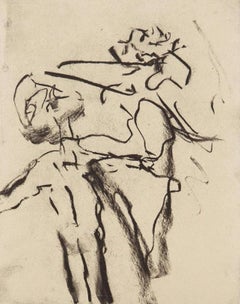Items Similar to Figures in Landscape - Offset and Lithograph after Willem De Kooning - 1985
Want more images or videos?
Request additional images or videos from the seller
1 of 6
Figures in Landscape - Offset and Lithograph after Willem De Kooning - 19851985
1985
$235.85
£179.32
€200
CA$330.85
A$361.48
CHF 190.12
MX$4,345.85
NOK 2,393.71
SEK 2,247.37
DKK 1,523.31
About the Item
Figures in Landscape is an offset and lithograph print realized on Fabriano Paper after a drawing by Willem De Kooning of 1967.
The print suite was realized in 1985 in a limited edition of 2500, and curated by Xavier Fourcade.
- Creation Year:1985
- Dimensions:Height: 14.57 in (37 cm)Width: 20.48 in (52 cm)Depth: 0.04 in (1 mm)
- Medium:
- Movement & Style:
- After:Willem de Kooning (1904-1997, American, Dutch)
- Period:
- Framing:Framing Options Available
- Condition:Insurance may be requested by customers as additional service, contact us for more information.
- Gallery Location:Roma, IT
- Reference Number:Seller: T-1359501stDibs: LU650311335382
About the Seller
4.9
Platinum Seller
Premium sellers with a 4.7+ rating and 24-hour response times
1stDibs seller since 2017
7,793 sales on 1stDibs
Typical response time: 1 hour
- ShippingRetrieving quote...Shipping from: Roma, Italy
- Return Policy
Authenticity Guarantee
In the unlikely event there’s an issue with an item’s authenticity, contact us within 1 year for a full refund. DetailsMoney-Back Guarantee
If your item is not as described, is damaged in transit, or does not arrive, contact us within 7 days for a full refund. Details24-Hour Cancellation
You have a 24-hour grace period in which to reconsider your purchase, with no questions asked.Vetted Professional Sellers
Our world-class sellers must adhere to strict standards for service and quality, maintaining the integrity of our listings.Price-Match Guarantee
If you find that a seller listed the same item for a lower price elsewhere, we’ll match it.Trusted Global Delivery
Our best-in-class carrier network provides specialized shipping options worldwide, including custom delivery.More From This Seller
View AllUntitled - Offset and Lithograph after Willem De Kooning - 1985
By Willem de Kooning
Located in Roma, IT
Untitled is an offset and lithograph print realized on Fabriano Paper after a drawing by Willem De Kooning of 1975.
Signed o the plate on the lower.
The print suite was realized i...
Category
1980s Abstract Expressionist Abstract Prints
Materials
Lithograph, Offset
Untitled - Offset and Lithograph after Willem De Kooning - 1985
By Willem de Kooning
Located in Roma, IT
Untitled is an offset and lithograph print realized on Fabriano Paper after a drawing by Willem De Kooning of 1975.
Signed o the plate on the lower.
The print suite was realized i...
Category
1970s Abstract Expressionist Abstract Prints
Materials
Lithograph, Offset
Untitled - Offset and Lithograph after Willem De Kooning - 1985
By Willem de Kooning
Located in Roma, IT
Untitled is an offset and lithograph print realized on Fabriano Paper after a drawing by Willem De Kooning of 1980.
The print suite was realized in 1985 in a limited edition of 2500...
Category
1980s Abstract Expressionist Abstract Prints
Materials
Lithograph, Offset
Figures in Interior - Offset and Lithograph after Willem De Kooning - 1985
By Willem de Kooning
Located in Roma, IT
Figures in Interior is an offset and lithograph print realized on Fabriano Paper after a drawing by Willem De Kooning of 1955.
Signed o the plate on the lower.
The print suite was...
Category
1980s Abstract Expressionist Abstract Prints
Materials
Lithograph, Offset
Untitled- Offset and Lithograph after Willem De Kooning - 1985
By Willem de Kooning
Located in Roma, IT
Untitled is an offset and lithograph print realized on Fabriano Paper after a drawing by Willem De Kooning of 1950.
The print suite was realized in 1985 in a limited edition of 2500...
Category
1980s Abstract Expressionist Abstract Prints
Materials
Lithograph, Offset
Figures with Bicycle- Offset and Lithograph after Willem De Kooning - 1985
By Willem de Kooning
Located in Roma, IT
Figures with Bicycle is an offset and lithograph print realized on Fabriano Paper after a drawing by Willem De Kooning of 1965.
The print suite was realized in 1985 in a limited edi...
Category
1980s Abstract Expressionist Abstract Prints
Materials
Lithograph, Offset
You May Also Like
Untitled (Litho #7)
By Willem de Kooning
Located in New York, NY
A very good impression of this scarce and early lithograph on Arches. Edition of 50. Printed at Hollander's Workshop, Inc., New York, with the blind stamp lower right.
Provenance: ...
Category
1960s Abstract Expressionist Abstract Prints
Materials
Lithograph
Willem de Kooning, Untitled, from Poems, 1988
By Willem de Kooning
Located in Southampton, NY
This exquisite lithograph by Willem de Kooning (1904–1997), titled Untitled, from the folio Poems, originates from the 1988 edition published by The Limited Editions Club, New York, ...
Category
1980s Abstract Expressionist Abstract Prints
Materials
Lithograph
$7,996 Sale Price
20% Off
Free Shipping
Willem de Kooning, Untitled, from Poems, 1988
By Willem de Kooning
Located in Southampton, NY
This exquisite lithograph by Willem de Kooning (1904–1997), titled Untitled, from the folio Poems, originates from the 1988 edition published by The Limited Editions Club, New York, ...
Category
1980s Abstract Expressionist Abstract Prints
Materials
Lithograph
$7,996 Sale Price
20% Off
Free Shipping
Willem de Kooning, Untitled, from Poems, 1988
By Willem de Kooning
Located in Southampton, NY
This exquisite lithograph by Willem de Kooning (1904–1997), titled Untitled, from the folio Poems, originates from the 1988 edition published by The Limited Editions Club, New York, ...
Category
1980s Abstract Expressionist Abstract Prints
Materials
Lithograph
$7,996 Sale Price
20% Off
Free Shipping
(after) Willem de Kooning - lithograph
By Willem de Kooning
Located in Henderson, NV
Medium: lithograph. From the "In Memory of My Feelings" portfolio, printed in 1967 on Mohawk Superfine Smooth paper in a limited edition of 2500 and published in New York by The Muse...
Category
1960s Prints and Multiples
Materials
Lithograph
Landscape at Stanton Street
By Willem de Kooning
Located in London, GB
Lithograph, 1971, on paper, signed and dated in pencil, numbered from the edition of 60,
published by Hollanders Workshop and Fourcade, New York, 75.7 x 56 cm. (30 x 2 2in.)
Category
1970s American Modern Abstract Prints
Materials
Lithograph
More Ways To Browse
Jasper Johns Signed Prints
Kabbalah Painting
Life Size Vintage Dolls
Miro Book
Miro Numbered Lithograph
Morris Anderson
R Allen
Willem de Kooning On Sale
Winifred Nicholson
1940s Lithograph
Albers Variant
Art Blue Heron
Fine Art Miro
Georges Braque Oiseaux
Israeli Pop Art
Jasper Johns Poster
Joan Miro 1961
Luigi Palumbo
